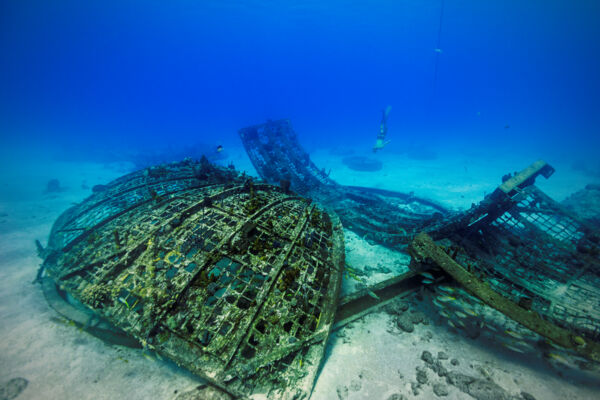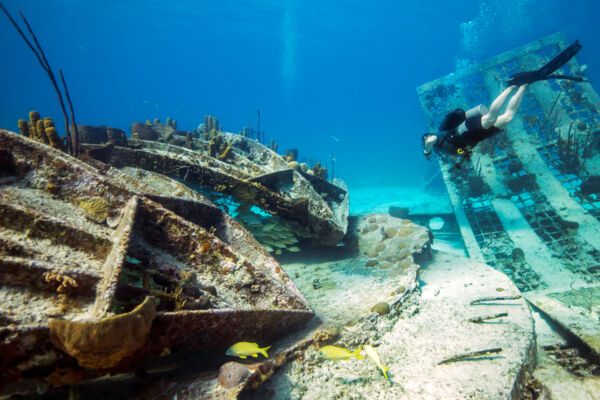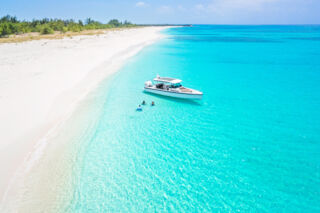Malcolm’s Road Beach Providenciales
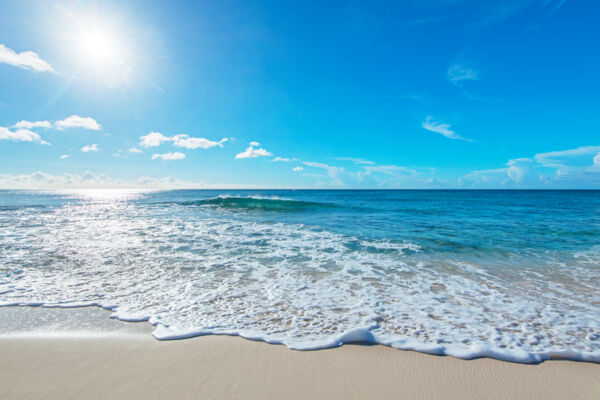
Malcolm’s Road Beach is a beautiful and secluded coast found on the remote western side of Providenciales. This beach is about 1.3 miles (2 km) long. The exclusive Amanyara resort is found at the southern end of the coast, and the northern side eventually becomes low limestone ironshore cliffs as it leads towards Northwest Point. South of Amanyara, Flamingo Creek Bay beach begins.
One unique aspect of Malcolm’s Road is that it’s located close to the wall, which is the sheer drop-off on the edge of the underwater Caicos Islands plateau. This feature surrounds much of the Caicos Islands group and is where you can find some of the best scuba diving in the region. Nearly all other beaches on Providenciales are quite far from the wall and are protected by the barrier reef, making this site rather special.
The depth at the top of the wall at Malcolm’s Road Beach is about 50 feet (15 m), and the wall rapidly descends to over 7,000 feet (2,100 m).
The Beach
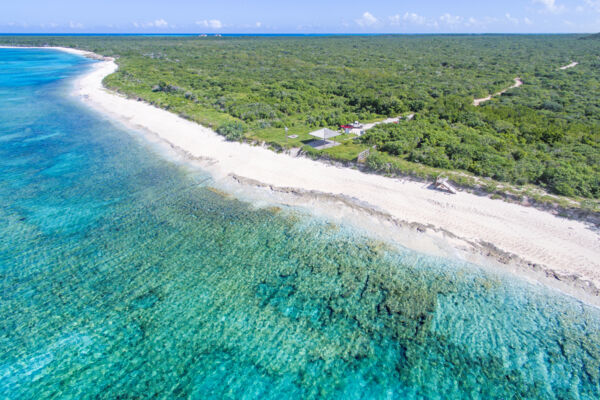
As is the case with all sand in the Turks and Caicos, the beach at Malcolm’s Road is made of broken-down coral and shell matter. The reef where much of this material originates isn’t far off, so the sand is consequently newer, large-grain, quite coarse, and irregular in structure. This may not sound pleasant, but it actually results in an amazing peach-toned beach that’s incredibly soft underfoot.
While there’s plenty of white sand to go around, you'll also find large ocean-worn rocks that have been piled up by waves and exposed limestone bedding interspersed along the coast.
Given its proximity to the edge of the Caicos Islands plateau, Malcolm’s Road Beach can be a bit more exposed to the ocean swells at times than the other beaches on the island, and hence offers a different character.
One of the defining features of the northwestern coast of Providenciales is its exquisite underwater visibility. Ocean conditions of course vary, but on a good day the water clarity is breathtaking.
Northwest Point Marine National Park
Malcolm’s Road Beach is part of the Northwest Point Marine National Park. This protected area includes the ocean out to the barrier reef and the beach up to the high tide point.
Dangers
Malcolm’s Road Beach is located in a remote area and there is a greater crime risk due to this seclusion. There have been cases of armed robberies against people visiting the beaches in this area. Considering the fewer number of travelers who visit Malcolm’s Road Beach compared to Grace Bay Beach and the other frequented beaches, the risk of crime here is higher.
See Safety and Crime.
Snorkeling and Shore Diving
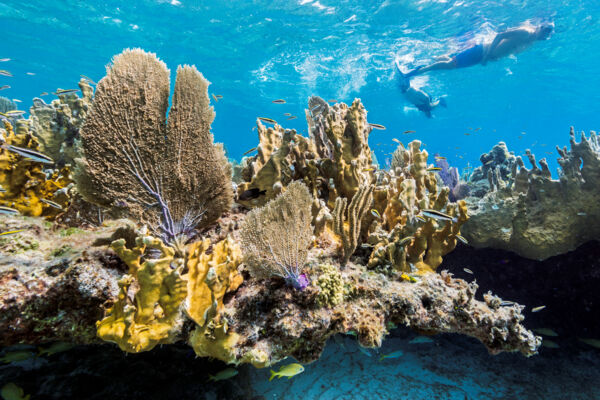
The reef and wall off of Malcolm’s Road Beach and Northwest Point hide some of the finest dive sites surrounding Providenciales. On calm days, dive boats from local tour companies and resorts, as well as liveaboard yachts, can be seen moored off the coast.
Malcolm’s Road Beach offers the best shore diving on Providenciales. Smith’s Reef near Turtle Cove and the Bight Reef are far more convenient, yet the spur and groove reef topography, underwater visibility, and opportunities to see larger sea animals (such as sharks) are superior at Malcolm’s Road.
Be aware that shore diving from Malcolm’s Road Beach is only suitable for experienced and skilled divers. It’s necessary to be aware of the wind, which may be offshore, and water currents. Decent reefs begin around 500–700 feet (150–210 m) off the beach, and the wall is 1,600 feet (490 m) out.
Excellent snorkeling can also be found across the length of this beach. The best sites are unfortunately a little difficult to find. To the right of the main access, the sand-filled depressions in the ancient coral shelf are quite interesting.
While Malcolm’s Road offers great underwater sights to explore, it's not a good site for beginner snorkelers and unsure swimmers. Beginner snorkelers and people who are less confident in the water will likely have a better experience at central Smith’s Reef and the Bight Reef.
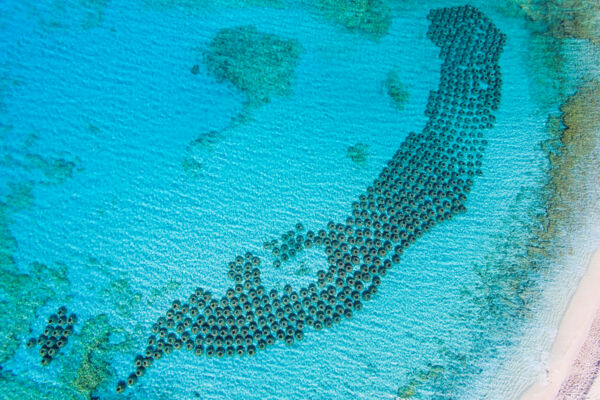
Freediving
Malcolm’s Road Beach is also the top Providenciales beach location for freediving. The factors that make the area a great place for scuba diving also make it an amazing spot to freedive—excellent visibility, the wall, and the deep blue ocean.
In 2015, a large number of concrete artificial reef balls were placed in the area. The system is designed to shelter fish, reduce beach erosion, and facilitate coral growth. These reef balls may be unsightly until they support coral, yet they do currently shelter colorful reef fish. Do not stand on these features, as doing so will kill developing hard and soft corals.
Le trésor de Pago Pago and the Thunderdome
In the early 1990s, Malcolm’s Road was the site of French game show Le trésor de Pago Pago. Tiki huts and a Mad Max-style underwater Thunderdome were built for this survivor challenge television show.
Unfortunately, one of the challenges involved freediving into the underwater cage, collecting 'pearls', getting air from a scuba tank, and then returning to the surface. Several contestants received lung over-expansion injuries and Le trésor de Pago Pago was canceled.
For about 10 years, the tiki huts were a popular spot for locals to spend the day until the area was taken over by Amanyara Resort.
The Thunderdome collapsed during Hurricane Frances in 2004.
Beach Accesses and Road Conditions
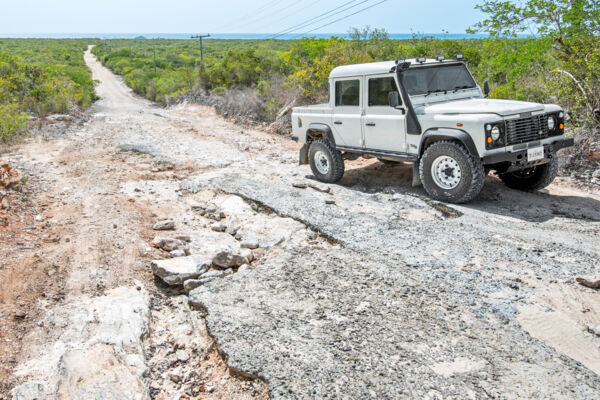
There is only one designated access to Malcolm’s Road: the Main Access. It's located at the conclusion of a three-mile-long (4.8 km) unpaved road that leads from the Wheeland and Blue Hills area of Providenciales.
To access this route, follow the paved Millennium Highway to where the pavement ends and take the immediate left. No official name or sign exists for this road. It’s sometimes referred to as Malcolm Road or Amanyara Road.
The worst section of this route is the final descent from the inland ridge and hills to the flat plain and beach below. There’s a cellular tower at the crest of the hill.
This road can be quite rough in places, yet can be slowly traversed by the typical compact and economy rental car. It's not advised to attempt the route by scooter. Surface conditions may vary depending on recent rainfall.
At the conclusion of the road is the ocean and a small developed beach access with a pavilion and paved parking spaces.
Several bulldozed tracks put in by failed developments also lead to various points along the beach. These poor-condition roads have gotten increasingly worse over the last few years, so it's best to avoid them.
Amanyara Resort
The chic and low-density Amanyara is found at the southern end of Malcolm’s Road Beach. This expansive site offers luxury accommodation in private villas and pavilions. Amenities include a spa and yoga studio, fine dining restaurants, and a nature discovery center. The resort is popular with celebrities.

